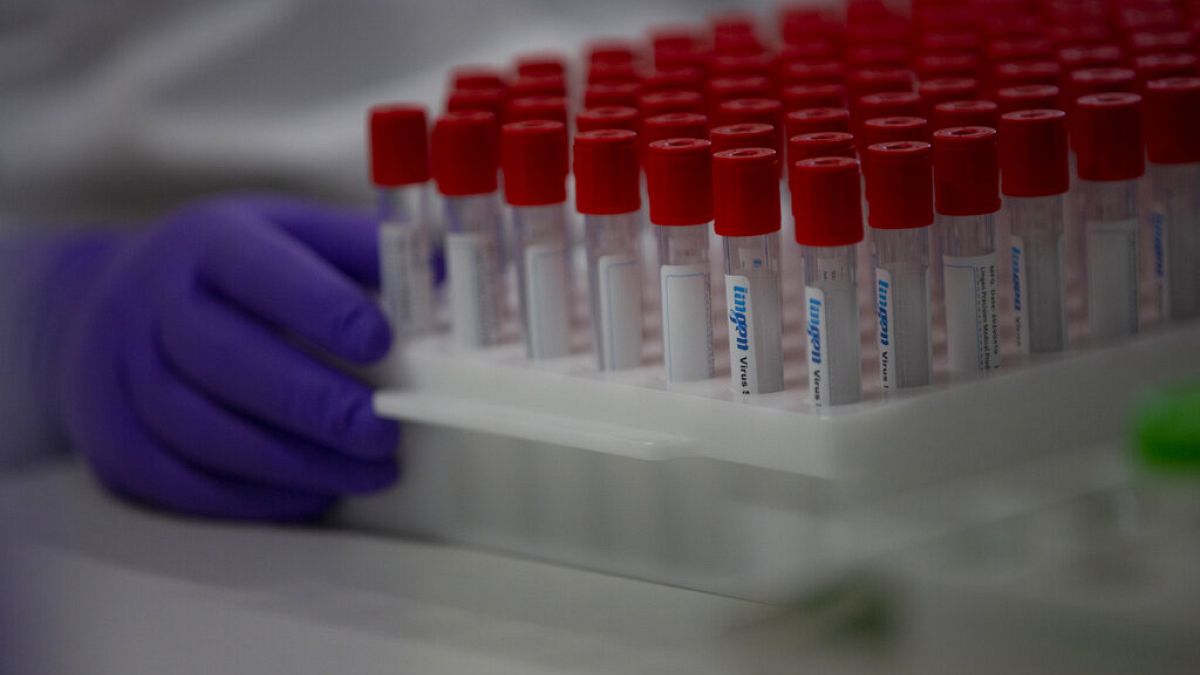Microdosing with drugs like psilocybin has become so popular that advocates want to bring it above ground

By Tiney Ricciardi | cricciardi@denverpost.com | The Denver Post
UPDATED: August 19, 2024
In late 2023, Crystal Peterson was feeling desperate.
The 44-year-old Cortez resident had long suffered from panic attacks that awoke her in the middle of the night. As the nights grew longer with the onset of winter, her mental anguish worsened.
Peterson had tried taking medication to help her sleep. She also experimented with mindfulness techniques like meditation and yoga. She even tried equine therapy, exercising more and changing her diet – nothing alleviated the feelings of overwhelm and distress.
Last December, Peterson decided to try microdosing psychedelic mushrooms after attending an informational session about the practice. She began working with a coach to determine a regimen that suited her needs, and within days, Peterson said she noticed improvement.
“The mushrooms helped me compartmentalize my stresses,” she said. “The things that are usually overwhelming and, ‘Oh my god!’ in my head are like, ‘No, you got this. We’re going to do this one step at a time.’ … I’ve really, really liked having less stress.”
As research into psychedelics has expanded, many Americans have turned to microdosing as a holistic alternative to improve their mental health. The practice involves taking a small dose of psychedelics as a supplement to enhance mood and cognitive function. While there’s limited scientific data to support how well – or if – microdosing works, anecdotal reports like Peterson’s number in the tens of thousands of people who say it’s helped them manage a wide variety of conditions, from chronic pain to creativity.
Psilocybin, one of the most commonly used drugs for microdosing, is now decriminalized in Colorado, though it remains a federally scheduled substance. Fueled by their personal experiences, advocates aim to bring microdosing above ground and make it more accessible. That includes one biotechnology company in Colorado that’s developing a full-spectrum psilocybin formula it hopes to put through clinical trials and get approved by the U.S. Food and Drug Administration. (The company, AJNA BioSciences, has a license from the Drug Enforcement Administration to conduct research.)
“When it’s used correctly with the right education and support, it can have a massive impact in people’s lives,” said Alli Schaper, co-founder of the advocacy organization Microdosing Collective. “We estimate there’s thousands of illicit market brands shipping microdosing supplements across the U.S. We might as well legalize it and make it safer.”

Guidelines for getting started
Because microdosing isn’t standardized like traditional medicine, there are few hard and fast rules about how to do it. Over time, however, the underground community has developed general guidelines.
For example, a microdose is supposed to be “sub-perceptual,” meaning an amount small enough that the drug does not cause a trip or significant impairment. Most say the sweet spot is between .1 and .4 grams of dried psilocybin mushrooms. But exactly how much requires personal experimentation since no two mushrooms are identical and each individual’s sensitivity to the substance is unique.
People often grind up dried mushrooms and put them in capsules for consumption, and sometimes they add non-psychoactive fungi like lion’s mane or reishi. There is an abundance of illegal microdosing products available to buy online, but because they are unregulated it’s impossible to know if the dosages and ingredients are as advertised without lab testing.
A widely cited rule of thumb: Start low and go slow.
Jayme Ely, a microdosing mentor based near Telluride, advises trying your first dose on a day with few or no obligations. Start at the low end of the spectrum – somewhere around .1 or .2 grams of mushrooms – to get a baseline understanding of the effects.
“Do it on Sunday when you’re just at home, see if you feel anything,” Ely suggested. “With microdosing you don’t feel anything. The effects are so subtle you don’t even notice it.”
If you want to up the dosage, do so incrementally, Ely said, or you could become nauseous or experience a mild trip, which are both common effects of ingesting psilocybin. The goal is to find a threshold, but not cross it to the point of hallucinating or impairment.
“If you take a microdose and you find you’re going through your day and everything is wonderful, fine. Drive yourself to work the next day, or lunch or whatever. If you go beyond the recommendations, you might have some experiences… like not feeling in control or not feeling comfortable, feeling nauseous or out of my zone a little bit,” she said.
After determining a dosage, it’s time to decide how often to microdose. Regimens vary widely, though once again there are some templates.
Famed mycologist Paul Stamets has advocated for microdosing four days in a row and then abstaining for the rest of the week. The Fadiman Protocol, named for researcher James Fadiman, calls for microdosing once every three days. Still, some people do it every other day or even just as needed.
For those just starting out, Ely recommends following Stamets’ schedule – four days on, three days off – to set a baseline.
“I always tell people, stick with the four days, even if you think you’re healed and the world has changed the next day. Stay consistent for four days at least,” she said.
Surge in popularity
Even though psilocybin was decriminalized in Colorado in 2022, there are no prescription formulas approved by the FDA that doctors can prescribe to patients who want to try microdosing. Complicating matters further is the fact psilocybin remains a federally scheduled substance alongside LSD or acid, another popular microdosing drug.
Without guidance from healthcare professionals, people have turned to online communities to fill in the information gaps. According to a recent study, internet searches for microdosing have skyrocketed by 1,240% since 2015. About 275,000 people share and seek advice about it in the /microdosing subreddit.

Coloradan Tracey Tee recognized the need for a safe space where women could learn about microdosing and connect over their shared experiences as parents. In 2022, she founded a virtual group called Moms on Mushrooms, which has grown to about 3,000 members. Tee said the popularity of microdosing reflects the need for alternative avenues to address mental health in an increasingly stressful world.
“Moms feel all of that, not only for themselves but also the humans they’re raising,” she said. “We’ve reached a point where we need a reset and I think a lot of people are discovering taking more and more pills passively over any number of years isn’t solving the problem.”
To that end, Tee said microdosing is unlike conventional medicine: “It’s not Advil, you don’t swallow it back and wait for it to change your life.”
It often requires introspection, reflection and a commitment to working through challenges that may arise, a process commonly called “integration.” For Montrose mom Bri Taylor, that included a lifestyle change. She stopped drinking alcohol and said microdosing makes her a more present parent for her two young sons.
For Monique Alvarez in Cortez, many of the benefits appeared in retrospect. After several months of microdosing consistently, she said she was able to tap into new sources of creativity.
“It’s easier to access better ideas, better solutions, and more innovative ideas. I’m able to see things from different perspectives. The dots are connecting in ways they haven’t before,” Alvarez said.
Up from the underground
Given the interest in microdosing, advocates see one important issue that still needs to be addressed: access.
When Colorado rolls out a legal industry around psychedelic therapy in 2025, microdosing won’t fit into that model, which focuses on giving people large quantities of psilocybin mushrooms for a guided trip. So right now and for the foreseeable future, the only legal ways to source microdoses are to grow your own mushrooms or find someone willing to share their stash.
Sharing and gifting have become more commonplace in Colorado since certain psychedelics were decriminalized. Ely, for example, frequently hosts informational sessions for small groups and sends attendees home with complimentary microdosing starter kits. She grows the mushrooms and makes microdosing capsules herself under the moniker Love On Telluride. She also offers mentorship to people who want it throughout their microdosing practice.
Denver was a leader in 2019 when the city effectively decriminalized “magic mushrooms,” inspiring a wave of similar efforts around the country. Oregon and Colorado are the only states to legalize psychedelic-assisted therapy so far, though several others are considering following suit.
As legalization has become a political talking point, Schaper at Microdosing Collective said regulators often fail to recognize the full scope of psychedelics’ potential by focusing on healing through large, so-called “macro-doses,” which have also attracted the bulk of research.
Schaper said while models like those in Oregon and Colorado represent important progress, they are cost-prohibitive and do not reflect how Americans currently use or want to use psychedelics. The Microdosing Collective recently hired a lobbyist intent on educating policymakers in hopes one day anyone can buy microdoses like they would any other supplement.
“There’s a huge opportunity to help people with their mental health with microdosing psychedelics and making sure it’s not trapped in big pharma and also not trapped at the service centers,” she said.
Colorado solidifies regulations for psychedelic mushroom growers, manufacturers and therapy centers
State investigating: Two people sickened after taking “magic mushroom” edibles made with synthetic psilocybin
Could Colorado communities not friendly to medicinal mushrooms put up roadblocks to stymie the industry?
University of Colorado unveils Center for Psychedelic Research in Denver
Originally Published: August 19, 2024






















